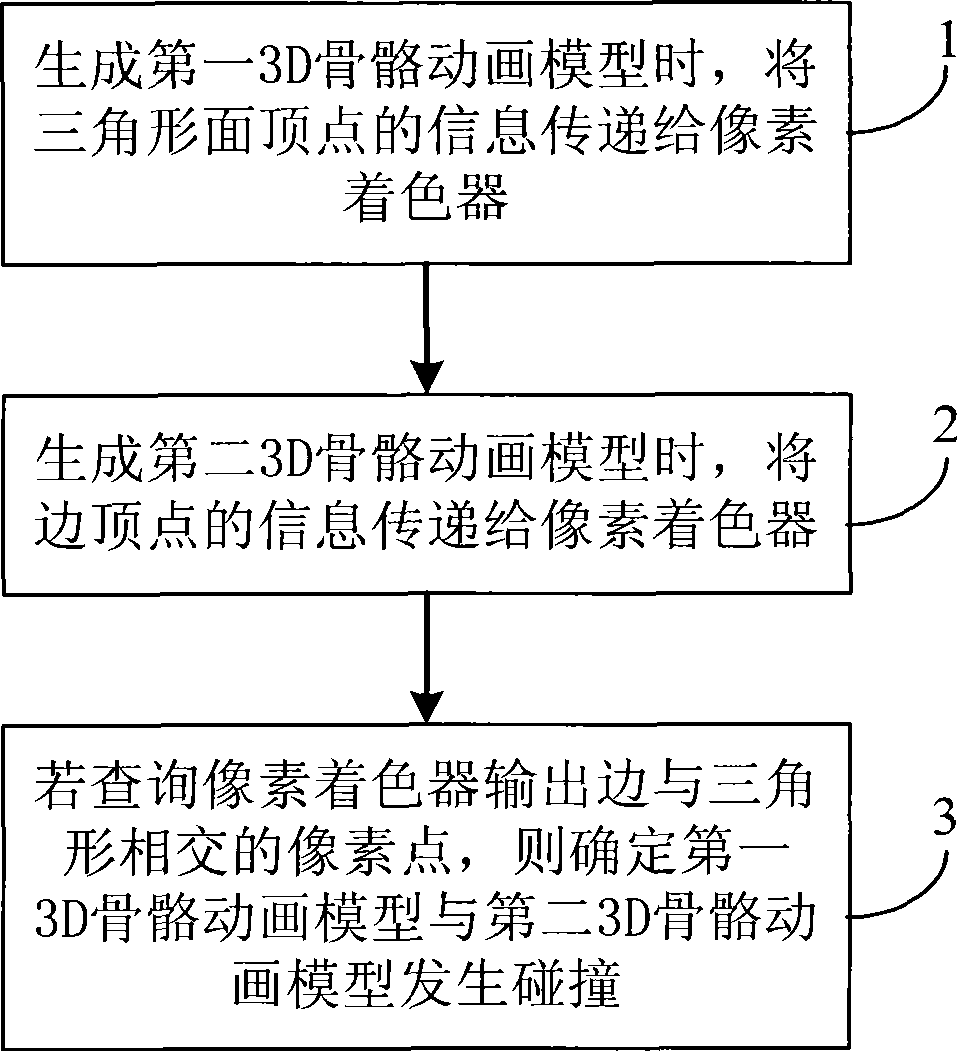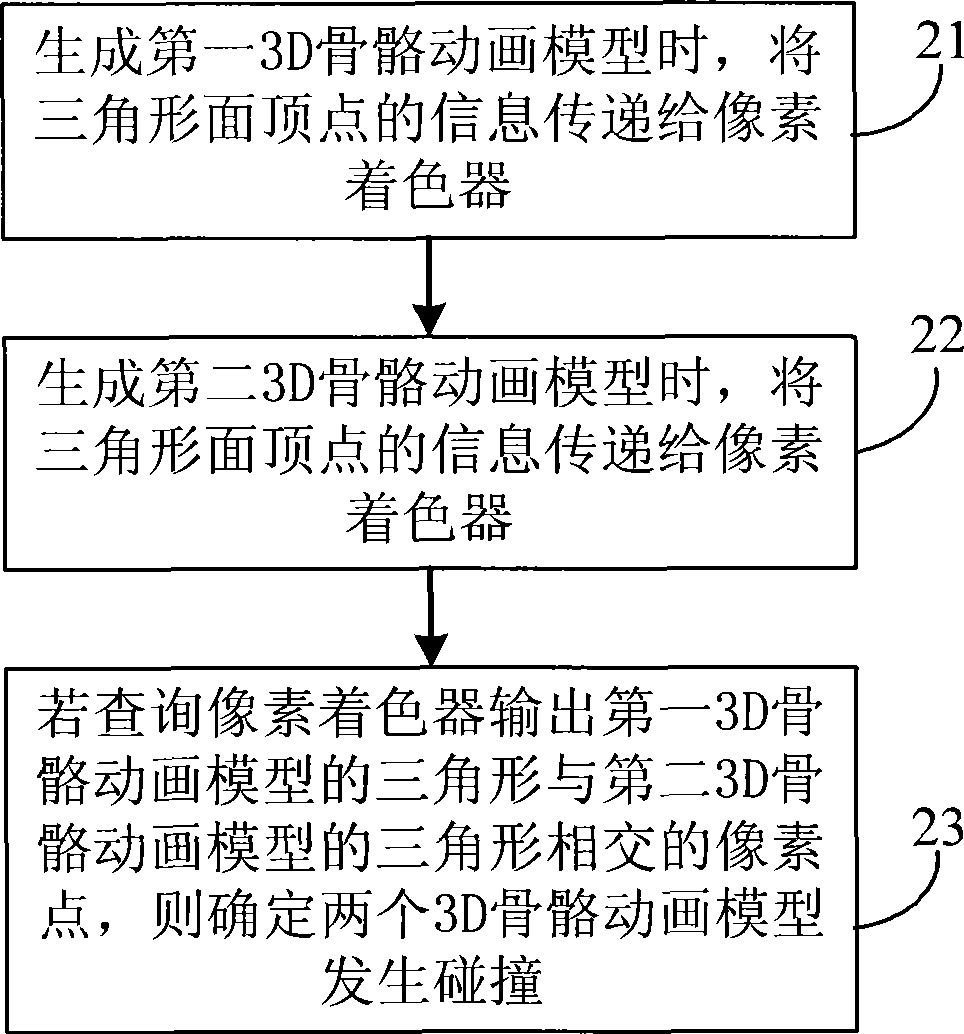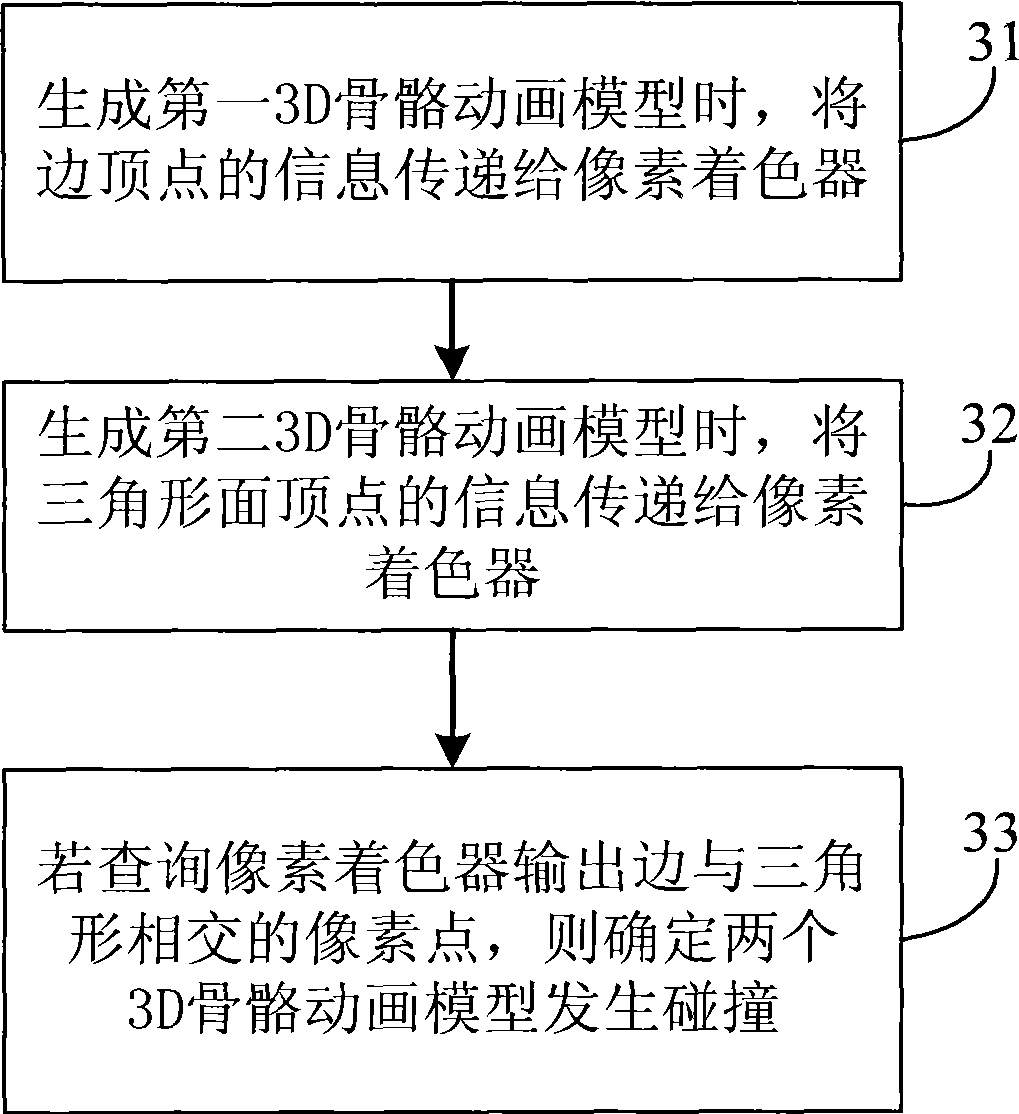Collision detection method implementing 3D animation model in display card, display card and system therefor
A technology of skeletal animation and collision detection, applied in the field of collision detection, which can solve the problems of high CPU usage and consumption of CPU resources.
- Summary
- Abstract
- Description
- Claims
- Application Information
AI Technical Summary
Problems solved by technology
Method used
Image
Examples
Embodiment 1
[0040] This embodiment provides a collision detection method for realizing a 3D skeletal animation model in a graphics card, through which the collision detection of the 3D skeletal animation model generated by the graphics card can be directly completed in the graphics card of the computer. The method is as follows: figure 1 As shown, it is used to detect whether the triangle of a 3D skeletal animation model intersects with the edge of another 3D skeletal animation model to detect whether two 3D skeletal animation models collide, specifically including the following steps:
[0041] Step 1: when the graphics card generates the triangle face vertex texture of the first 3D skeletal animation model, the information of the determined triangle face vertex is passed to the pixel shader of the graphics card as the information of the pixel point of the output triangle face texture;
[0042] Step 2: when the graphics card generates the edge and vertex texture of the second 3D skeletal a...
Embodiment 2
[0057]This embodiment provides another collision detection method for implementing a 3D skeleton animation model in a graphics card, which is to detect whether the triangle of a 3D skeleton animation model intersects with the triangle of another 3D skeleton animation model in the graphics card to detect two 3D skeletons Whether the animation model collides, the method is as figure 2 As shown, it specifically includes the following steps:
[0058] Step 21: when the graphics card generates the triangle face vertex texture of the first 3D skeletal animation model, the information of the determined triangle face vertex is passed to the pixel shader of the graphics card as the pixel point information of the first 3D skeletal animation model triangle face texture;
[0059] Step 22: when the graphics card generates the triangle face vertex texture of the second 3D skeletal animation model, the information of the determined triangle face vertex is passed to the pixel shader of the gr...
Embodiment 3
[0062] This embodiment provides yet another collision detection method for realizing a 3D skeletal animation model in a graphics card, which is to detect whether the edge of a 3D skeletal animation model intersects with the triangle of another 3D skeletal animation model in the graphics card to detect two 3D skeletons Whether the animation model collides, the method is as image 3 As shown, it specifically includes the following steps:
[0063] Step 31: when the graphics card generates the edge and vertex texture of the first 3D skeletal animation model, the information of the determined edge and vertex is passed to the pixel shader of the graphics card as the information of the pixel point of the output edge texture;
[0064] Step 32: when the graphics card generates the triangle face vertex texture of the second 3D skeletal animation model, the information of the determined triangle face vertices is passed to the pixel shader of the graphics card as the pixel point informati...
PUM
 Login to View More
Login to View More Abstract
Description
Claims
Application Information
 Login to View More
Login to View More - R&D
- Intellectual Property
- Life Sciences
- Materials
- Tech Scout
- Unparalleled Data Quality
- Higher Quality Content
- 60% Fewer Hallucinations
Browse by: Latest US Patents, China's latest patents, Technical Efficacy Thesaurus, Application Domain, Technology Topic, Popular Technical Reports.
© 2025 PatSnap. All rights reserved.Legal|Privacy policy|Modern Slavery Act Transparency Statement|Sitemap|About US| Contact US: help@patsnap.com



